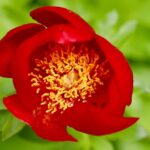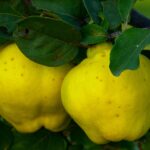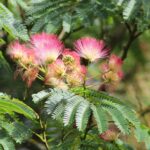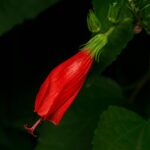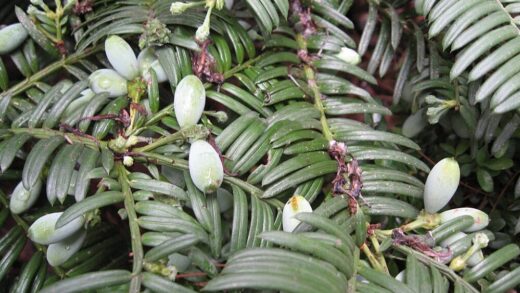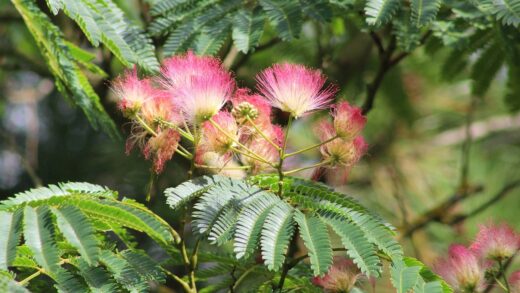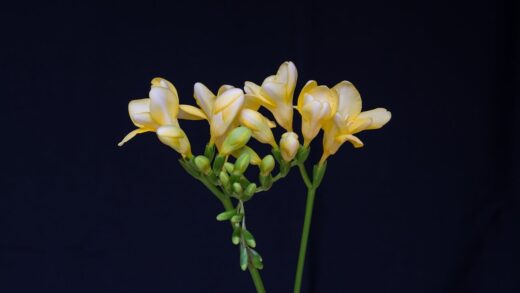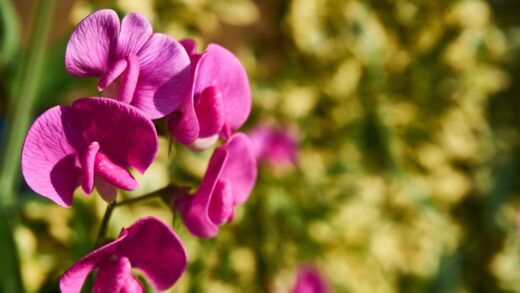To achieve the spectacular foliage and robust health that make Hosta ventricosa a garden standout, it is essential to address its specific nutritional needs. While this plant is relatively self-sufficient in organically rich soil, a well-considered fertilization program can elevate its performance from merely good to truly magnificent. Proper nutrition fuels the vigorous growth of its large, heart-shaped leaves, supports the development of strong root systems, and provides the energy needed to produce its elegant spires of violet flowers. Understanding what, when, and how to feed this shade-loving perennial is a key aspect of its cultivation, ensuring it has the necessary building blocks to reach its full genetic potential and maintain its vigor year after year. An effective feeding strategy is not about excessive application, but about providing a balanced and timely supply of nutrients that complements the natural fertility of the soil.
The nutritional needs of Hosta ventricosa are centered around the three primary macronutrients: nitrogen (N), phosphorus (P), and potassium (K). Nitrogen is arguably the most critical for hostas, as it is the primary component in chlorophyll and is directly responsible for promoting lush, green leafy growth. Phosphorus plays a vital role in root development, energy transfer, and flower production. Potassium contributes to the overall health and hardiness of the plant, strengthening its resistance to disease, drought, and cold. A balance of these three, along with a range of micronutrients, is essential for a healthy plant.
The best source of nutrition for hostas is soil that is inherently fertile and rich in organic matter. Amending the soil with materials like compost, well-rotted manure, or leaf mold before planting and applying a top dressing each spring provides a slow, steady release of a wide spectrum of nutrients. This approach not only feeds the plant but also improves the soil’s structure, water retention, and microbial life, creating a healthy ecosystem for the roots to thrive in. For many gardens with good soil, this may be all the fertilization that is ever required.
However, in gardens with less-than-ideal soil or for those seeking to maximize the size and vibrancy of their plants, supplemental fertilizers can be highly beneficial. The key is to apply them judiciously, as over-fertilization can cause more harm than good, leading to weak growth and potential root damage. The timing of the application is also critical; feeding should be concentrated during the period of most active growth in the spring and early summer and should be ceased by mid-summer to allow the plant to prepare for winter dormancy. This thoughtful approach to nutrition will be rewarded with a hosta that is not only beautiful but also strong and resilient.
Understanding essential nutrients
A deeper understanding of the specific roles of essential nutrients can help in tailoring a more effective fertilization plan for Hosta ventricosa. Nitrogen (N) is the engine of foliage production. It is a key element in the amino acids that form proteins and is a central component of the chlorophyll molecule, which is responsible for photosynthesis. A sufficient supply of nitrogen results in the deep green, vibrant leaves that are the hallmark of a healthy hosta. A nitrogen deficiency, on the other hand, will manifest as stunted growth and pale, yellowish leaves, particularly the older, lower leaves on the plant.
More articles on this topic
Phosphorus (P) is crucial for the plant’s energy management and structural development. It is a component of DNA and is essential for the processes of cell division and growth. For hostas, phosphorus is particularly important for establishing a strong and extensive root system, which is the foundation of the plant’s ability to absorb water and other nutrients. It also plays a role in the production of flowers and seeds. While hostas are not primarily grown for their flowers, adequate phosphorus ensures the plant has the resources for its entire life cycle. Signs of phosphorus deficiency can be subtle but may include a purplish tinge to the leaves and overall poor growth.
Potassium (K) is often referred to as the “quality” nutrient, as it regulates many of the plant’s internal processes that contribute to its overall hardiness. It is vital for regulating the movement of water, nutrients, and carbohydrates within the plant tissues. A sufficient supply of potassium strengthens cell walls, which helps the plant withstand stress from drought, temperature extremes, and disease pathogens. It improves the plant’s general vigor and its ability to survive the winter. A potassium deficiency might be indicated by yellowing along the margins of the leaves, weak stems, and a reduced tolerance to environmental stresses.
Beyond these three macronutrients, hostas also require a range of micronutrients, such as iron, manganese, and magnesium, albeit in much smaller quantities. Rich organic matter like compost is an excellent source of these micronutrients. In alkaline soils, iron can become unavailable to the plant, leading to iron chlorosis, which appears as yellowing leaves with contrasting green veins. Addressing the soil pH or using a fertilizer supplemented with chelated iron can correct this issue. A balanced nutritional approach ensures that all these elements are available to the plant in the proper proportions.
Choosing the right fertilizer
Selecting an appropriate fertilizer for Hosta ventricosa depends on the existing soil fertility and the gardener’s preference for organic or synthetic options. For a general-purpose feeding, a balanced granular fertilizer with an N-P-K ratio of 10-10-10 or a similar formulation is a reliable choice. These balanced fertilizers provide an equal supply of the three main macronutrients, supporting all aspects of the plant’s growth. Slow-release formulations are particularly beneficial as they break down gradually over several months, providing a consistent stream of nutrients that aligns with the plant’s needs throughout the growing season.
More articles on this topic
For gardeners who prioritize organic methods, there are many excellent alternatives to synthetic granular fertilizers. A generous application of high-quality compost or well-rotted animal manure in the spring is often sufficient to meet the plant’s needs for the entire year. These amendments not only supply nutrients but also improve soil health. For an additional boost, specific organic products can be used. Alfalfa meal is a great source of balanced nutrients, blood meal provides a quick boost of nitrogen, and bone meal is rich in phosphorus. These can be worked into the soil around the plant in early spring.
Liquid fertilizers offer another option for feeding hostas, particularly for providing a quick nutritional lift during periods of active growth. Formulations such as fish emulsion or compost tea can be diluted with water and applied to the soil around the plant every two to three weeks from spring to early summer. Liquid feeding can be especially useful for container-grown hostas, as the nutrients in potting mixes are depleted more quickly than in garden soil. However, care must be taken not to apply liquid fertilizer directly to the leaves, especially during sunny conditions, as this can cause them to burn.
Ultimately, the “right” fertilizer is one that complements the soil and meets the plant’s needs without being excessive. It is often a good practice to start with a conservative application rate, as it is much easier to add more fertilizer than it is to remedy the effects of over-fertilization. Observing the plant’s response is key; a healthy, vigorously growing hosta with deep green leaves is a clear sign that its nutritional needs are being met. Adjustments can then be made in subsequent seasons based on the plant’s performance.
The timing and frequency of application
The timing of fertilizer application is just as important as the choice of fertilizer itself. The primary feeding for Hosta ventricosa should occur in the early spring, just as the new growth is emerging from the ground. This initial application provides the plant with the necessary resources to fuel its rapid development of leaves and roots. Applying a slow-release granular fertilizer at this time ensures a steady supply of nutrients that will last for several months, covering the plant’s peak growth period.
If using a single application of slow-release fertilizer in the spring, no further feeding is typically necessary for the rest of the season, especially if the hosta is planted in organically rich soil. However, if the soil is poor, or if you are using quicker-release or liquid fertilizers, a second, smaller application may be beneficial in late spring or early summer. This can help sustain the plant’s vigor through the flowering period. This second application should be lighter than the first.
It is critically important to stop all fertilization by mid-summer, generally around the beginning of July. Fertilizing late in the season can stimulate a flush of new, tender growth. This new foliage will not have adequate time to harden off and mature before the first frosts of autumn arrive. As a result, this tender growth is highly susceptible to cold damage, which can weaken the plant and make it more vulnerable to winter injury and disease. The plant needs the late summer and early autumn period to slow its growth and begin the process of moving energy reserves down into its roots for winter dormancy.
For newly planted hostas, it is often best to be conservative with fertilization during their first year. The primary focus for a new plant is to establish a strong root system. The amended soil in the planting hole should provide sufficient nutrients for the first season. A light application of a root-stimulating fertilizer low in nitrogen and high in phosphorus can be beneficial, but heavy feeding should be avoided until the plant is well-established in its second year. This patient approach allows the plant to build a solid foundation for future growth.
Recognizing signs of nutrient deficiency and excess
Vigilant observation of the foliage of Hosta ventricosa can provide valuable clues about its nutritional status. A nutrient deficiency will often manifest in specific visual symptoms. The most common is a general yellowing of the leaves, known as chlorosis. If the yellowing is uniform across the entire plant, particularly on the older, lower leaves, it often indicates a nitrogen deficiency. If the leaves are yellow but the veins remain green, this is typically a sign of an iron or magnesium deficiency, often linked to a high soil pH that makes these nutrients unavailable to the plant.
Other deficiency symptoms can be more subtle. Stunted growth, smaller-than-usual leaves, and a general lack of vigor can point to a broad lack of fertility in the soil. A phosphorus deficiency may sometimes cause the leaves to take on a dull, slightly purplish cast. Weak stems and brown, dried edges on the leaves, especially when not caused by a lack of water, can be an indicator of a potassium deficiency. Recognizing these signs early allows the gardener to take corrective action, whether it’s by applying a targeted nutrient, a balanced fertilizer, or adjusting the soil pH.
Just as a lack of nutrients can cause problems, an excess of fertilizer can be equally, if not more, damaging. The most common sign of over-fertilization is burnt or scorched leaf margins, which appear as a uniform, dark brown, crispy edge around the leaves. This is caused by an accumulation of fertilizer salts in the soil, which draws moisture out of the roots and damages them. In severe cases, the entire plant may wilt and decline, even when the soil is moist.
An excess of nitrogen, in particular, can lead to its own set of problems. It can cause the plant to produce overly lush, soft, and floppy foliage that is weak and more susceptible to damage from wind and rain. This type of growth is also highly attractive to pests like slugs, snails, and aphids. If over-fertilization is suspected, the best course of action is to water the area heavily and deeply several times to try and flush the excess salts from the root zone. In the future, application rates should be reduced or the frequency of feeding decreased.







